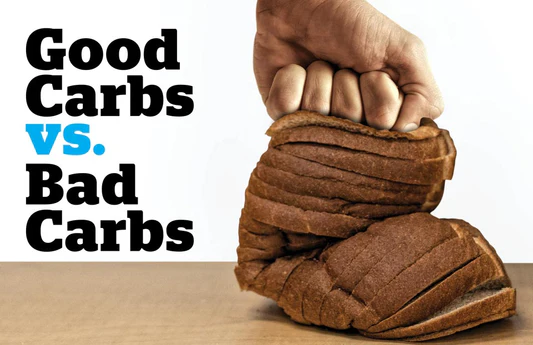
Compression socks. You already know you look super sexy in them but can they actually improve athletic performance and recovery?
In this article, we will discuss what compression socks are, how they work, claimed benefits, and if they are worth your hard-earned money.
What are compression socks?
Compression socks are exactly what they sound like. Tight-fitting socks that wrap and compress around the foot and lower leg. Depending on if they are medical grade or meant for athletic performance/recovery the level of compression will vary from very tight to somewhat tight
What do compression socks do?
The theory behind compression socks is they can improve blood flow, reduce vibration, decrease fatigue, and clear metabolic waste. All of which can possibly help with lower leg muscle function, athletic performance, and recovery.
We’ll discuss each of these more in-depth in later sections of this article.
What are they made of?
In general compression socks are made from a combination of nylon and spandex. With spandex accounting for 80% and spandex 20%. They may also include technical fabrics that wick away moisture from the foot and lower leg.
Standard levels for medical-grade compression socks
Medical grade compression socks can be broken down into 4 categories of graduated compression based on millimeters of mercury (mmHg). These are:
- Over the counter: 15-20 mmHg
- Medical class 1: 20-30 mmHg
- Medical class 2: 30-40 mmHg
- Medical class 3: 40-50 mmHg
Standard levels for athletic grade compression socks
Compression socks meant for running other athletic activities can also be broken down into 4 categories. These are:
- Mild compression: 8-15 mmHg
- Moderate compression: 15-20 mmHg
- Firm compression: 20-30 mmHg
- Extra firm compression: 30-40 mmHg
For both medical grade and athletic compression socks, they will be tighter around the foot and the compression will gradually decline as it moves up your leg.
Benefits of compression socks
Many claims have been made that compression socks can improve performance and recovery.
Performance claims:
- Increases joint awareness.
- Increases muscle oxygenation.
- Decreases muscle vibration.
- Increases skin temperatures.
- Reduces the perception of fatigue.
Recovery claims:
- Assists with metabolic waste removal (like lactic acid) after exercise.
- Increases blood flow.
- Reduces delayed onset muscle soreness.
- Reduces the concentration of creatine kinase. A blood marker that indicates muscle damage.
These are some hefty claims but are they supported by the available research?
Surprisingly, there have been quite a few studies done on compression socks. And honestly, it's really a mixed bag of results.
On the one hand, some of the studies were very poorly run and there are a lot of inconsistencies. On the other hand, there are some solid research studies done on compression socks. Let’s look at these next.
Research
First, let’s look at studies that measured performance when subjects wore compression socks.
Study #1: Compression socks improve 5k running performance
In this study, researchers brought 12 runners to the lab on 2 separate occasions and had them do a 5k time trial followed by 60 minutes rest and then another 5k time trial.
On one occasion the runners wore compression socks and on the other, they did not.
After crunching the data, the geeks discovered that on the occasion when the runners wore the compression socks that their 2nd 5k time trial was only 6 seconds slower compared to their first. When the didn’t wear the compression socks, they were 17 seconds slower.
So why were the runners faster when they wore compression socks?
The researchers concluded that when the runners wore the compression socks it reduced muscle vibration or oscillation. In turn, this may have decreased fatigue and increased oxygenation of the leg muscles.
The compression socks may also have increased running efficiency.
Study #2: Compression socks improve oxygen cost of running
A 2016 study discovered that the use of compression socks improved the oxygen cost of running approximately 9% at velocities of 10, 12, 14, and 16 kilometers an hour.
This improvement was attributed to the compression socks increasing muscle coordination and propulsive forces during running.
Simply put, the compression socks improved muscle function and allowed the runners to generate more power with each step.
Study #3: Compression socks reduces muscle inflammation and swelling
The research actually backs this claim up quite a bit.
There was a big meta-analysis done, which is a review of a bunch of different papers on compression garments, that showed that compression garments do reduce the inflammatory response.
Now, is this a good thing? We've mentioned in other articles that sometimes we want the inflammatory response to occur to allow adaptations to exercise. Point being? It’s not always a good thing to blunt the body’s inflammation process.
The research agrees that compression garments can reduce the amount of creatine kinase after intense exercise. Creatine kinase is a biomarker of muscular damage.
After an intense exercise session, muscles are damaged, and concentrations of creatine kinase are elevated in the blood. And what the researchers think compression socks do here is they act like a “muscle pump”, so they help clear creatine kinase out faster so your muscles can recover a little bit quicker.
When to wear compression socks
Compression socks can either be worn during exercise to improve performance, after exercise to promote recovery or both.
How to put them on
The easiest way to put compression socks on is to turn them inside out and “roll” the sock over your foot and up your lower leg.
How tight should they be?
As a rule of thumb, the compression socks you choose should feel snug around your foot and lower leg but not so tight where the muscles become painfully compressed.
Most athletes will see benefits from using a compression sock that is 18-24 mmHg.
Research has demonstrated this amount of graduated compression is the optimal amount to improve blood flow and maximize recovery.
How long to wear compression socks
There is no straight answer here. Some people will wear them all day long. Others will only wear them during exercise. Some will only wear them after exercise. Experiment with each and determine which strategy works best to improve your athletic performance and recovery.
How to measure for them
Usually, the size of the compression sock you’ll need will match your shoe size. If they are too big or small, it can cause blisters or restricted blood flow. Do the following measurements to determine your ideal size:
- Length - The compression socks should be long enough to cover your whole calf and shin. This measurement should be done with bare feet. Then measure the distance from the back of your knee to the bottom of your heal.
- Ankle – Measure the circumference of your ankle at the narrowest part right above the ankle bone.
- Calf – Measure at the widest part of your gastrocnemius (calf muscle).
- Arch – Measure from the point on the top of your foot to the highest point of your arch.
Once these measurements are done, reference the sizing chart (usually included on the packaging) on the compression socks you are considering.
What are the best running compression socks?
According to runnerclick.com the best compression socks as tested by runners are:
- Rockay Vigor
- Physix
- SB SOX
- Go2Socks
- MudGear
- U Compression Socks
- BLITZU
- Zensah (author recommended)
- CEP Progressive (author recommended)
Where to buy compression socks?
Compression socks can be purchased online, at sporting good stores, and typically at running and cycling specialty shops.
How much do they cost?
A high-quality pair of compression socks, whether designed for athletic or medical purposes, will cost you $40 to $200.
So do compression socks actually work?
For the most part, the research does agree that compression socks can help performance and recovery.
If anything we know they DO NOT hurt anything.
Whether you get the performance or recovery benefits really depends on the compression gradient of the sock and how you choose to wear them.
Matt Mosman (MS, CISSN, CSCS) is a research scientist, endurance athlete, and the founder and Chief Endurance Officer at EndurElite. Matt holds his B.S. in Exercise Science from Creighton University and his M.S. in Exercise Physiology from the University of California. Matt and his family reside in Spearfish South Dakota, where they enjoy running, mountain biking, camping, and all the outdoor adventures Spearfish has to offer.
References:
- Hill, J., Howatson, G., van Someren, K., Leeder, J., and Pedlar, C. (2013). Compression garments and recovery from exercise-induced muscle damage: a meta-analysis. British Journal of Sports Medicine, 0, pp.1-7.
- Stauber WT, Clarkson PM, Fritz VK, et al. Extracellular matrix disruption and pain after eccentric muscle action. J Appl Physiol 1990;69:868–94.
- Smith L. Acute inflammation: the underlying mechanism in delayed onset muscle soreness? Med Sci Sports Exerc 1991;23:542–51.
- Connolly DAJ, Sayers SP, McHugh MP. Treatment and prevention of delayed onset muscle soreness. J Strength Cond Res 2003;17:197–208.
- Kraemer WJ, French DN, Spiering BA. Compression in the treatment of acute muscle injuries in sport. Int Sport Med J 2004;5:200–8.
- Clarkson PM, Sayers SP. Aetiology of exercise-induced muscle damage. J Appl Physiol 1999;24:234–48.
- Kraemer WJ, Bush JA, Wickham RB, et al. Influence of compression therapy on symptoms following soft tissue injury from maximal eccentric exercise. J Orthop Sport Phys 2001;31:282–90.
- Davies V, Thompson KG, Cooper SM. The effects of compression garments on recovery. J Strength Cond Res 2009;2:1786–94.
- French DN, Thompson KG, Garland SW, et al. The effects of contrast bathing and compression therapy of muscular performance. Med Sci Sports Exerc 2008;40:1297–306.
- Prasartwuth O, Taylor JL, Gandevia SC. Maximal force, voluntary activation and muscle soreness after eccentric damage to human elbow flexor muscles. J Physiol 2005;567:337–48.
- Duffield R, Cannon J, King M. The effects of compression garments on recovery of muscle performance following high-intensity sprint and plyometric exercise. J Sci Med Sport 2010;13:136–40.
- Bringard A, Perrey S, Belluye N. Aerobic energy cost and sensation responses during submaximal running exercise positive effects of wearing compression tights. Int J Sports Med 2006; 27 (5): 373-8.
- Barrack RL, Skinner HB, Buckley SL. Proprioception in the anterior cruciate deficient knee. Am J Sports Med 1989; 17: 1-6
- Perlau R, Frank C, Fick G. The effect of elastic bandages on human knee proprioception in the uninjured population. Am J Sports Med 1996; 23 (2): 251-5
- Doan BK, Kwon Y, Newton RU, et al. Evaluation of a lower-body compression garment. J Sport Sci 2003; 21 (8): 601-10
- Kraemer WJ, Bush JA, Newton RU, et al. Influence of a compression garment on repetitive power output production before and after different types of muscle fatigue. Sports Med Training Rehabil 1998; 8 (2): 163-84
- Kraemer WJ, Flanagan SD, Comstock BA, et al. Effects of a whole body compression garment on markers of recovery after a heavy resistance workout in men and women. J Strength Cond Res 2010;24:804–14.
- Ali A, Creasy RH, Edge JA. Physiological effects of wearing graduated compression stockings during running. Eur J Appl Physiol 2010; 109 (6): 1017-25
- Duffield R, Edge J, Merrells R, et al. The effects of compression garments on intermittent exercise performance and recovery on consecutive days. Int J Sports Physiol Perform 2008; 3: 454-68
- Davies V, Thompson KG, Cooper S-M. The effects of compression garments on recovery. J Strength Cond Res 2009; 23 (6): 1786-94
- Wilcock, I.M., Cronin, J.B., and Hing, W.A., (2006). Physiological response to water immersion: A method of recovery? Sports Medicine, 36(9), pp.747-765.
- Comite´ Europe´en de Normalisation. ENV 12718: Medical compression hosiery. Brussels: Comite´ Europe´en de Normalisation, 2001
- Partsch H, Clark M, Bassez S, et al. Measurement of lower leg compression in vivo: recommendations for the performance of measurements of interface pressure and stiffness. Dermatol Surg 2006; 32 (2): 224-3 3
- McRae, B.A., Cotter, J.D., and Laing, R.M. (2011). Compression Garments and Exercise: Garment Considerations, Physiology and Performance. Sports Medicine, 41 (10), pp.815-843.








